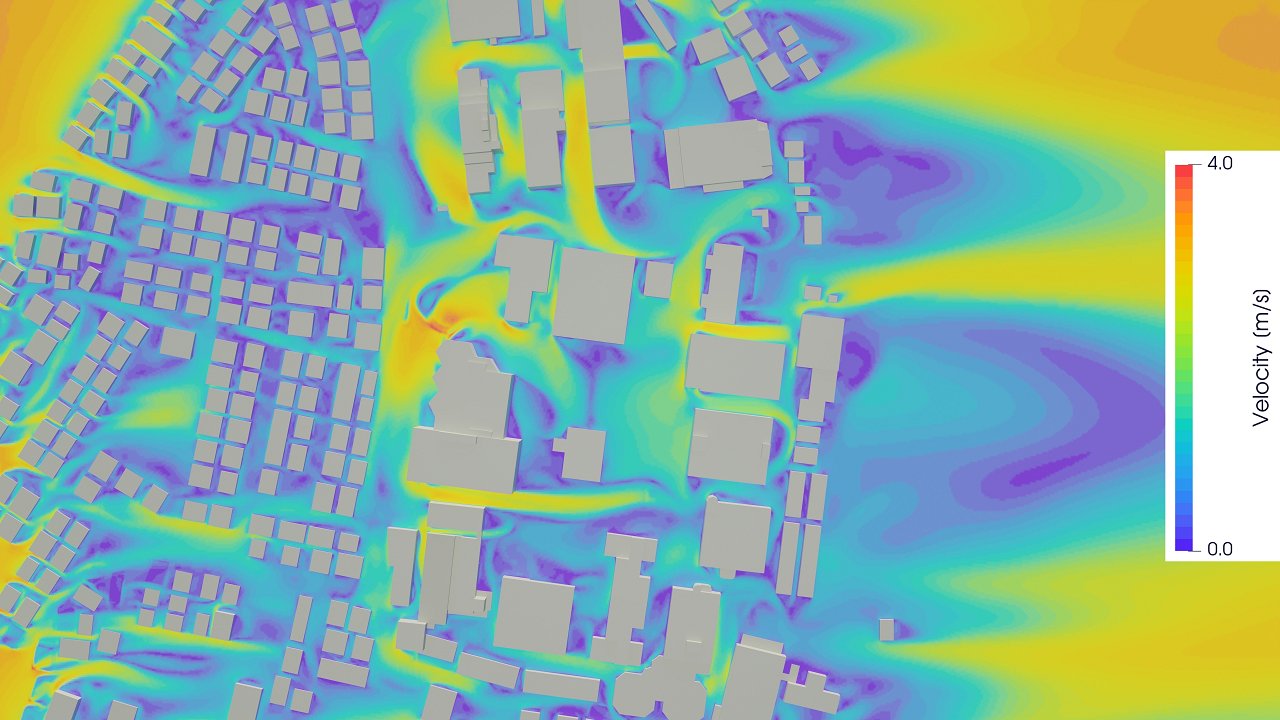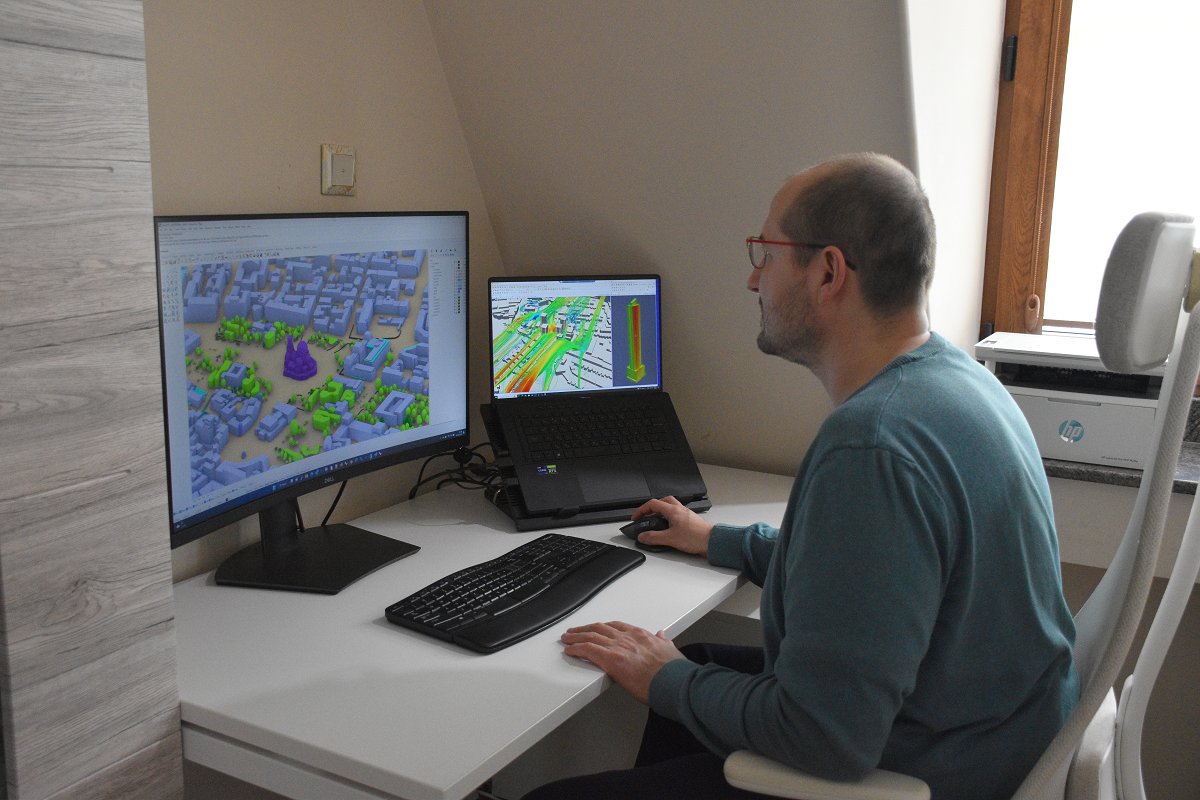Cloud-Based CFD for Urban Microclimate Assessment and Architectural Planning
The sophistication and volume of CFD simulations required to service the Urban Physics Modelling (UPM) market are constantly increasing. These changes are driven by accelerating efforts towards digitisation and efficiency in Architecture, Engineering and Construction (AEC) and more demanding regulations for sustainability and citizen well-being, in the form of environmental legislation and guidelines.
SECTOR: Civil Engineering, Environment
TECHNOLOGY USED: HPC, CFD Simulations
COUNTRY: Bulgaria
The challenge
Since its foundation, SoftSim has been offering a broad spectrum of Urban Physics Modelling (UPM) solutions, dedicated to assisting engineers, urbanists, and architects operating across Europe. Aiming to optimize urban planning and solve environmental problems, its services include a wide range of applications and analyses, from pedestrian comfort and wind loading of structures to gaseous pollutant dispersion and wind-driven rain deposition. In this context, high-fidelity CFD methodologies are employed.
However, higher regulatory standards for citizen well-being and sustainability generate ever-increasing requirements in the volume and sophistication of the services to be provided. Since these complex larger-scale contracts demand the investigation of many different scenarios, e.g. different reference wind speeds and directions, for a single microclimatic investigation, the available in-house computational systems are no longer sufficient. At the same time, financing on-premises state-of-the-art hardware systems entails prohibitive costs. Furthermore, the complexity of conducting the required interdisciplinary investigations necessitates a high level of analyst expertise. Especially in Bulgaria, where SoftSim operates, the overall deficit of experienced CFD engineers makes hiring and training employees of sufficient skill level a difficult and costly task. As a result, SoftSim is challenged to achieve sustainable growth within a highly competitive AEC sector.
The solution
A comprehensive UPM infrastructure that utilizes CFD and High-Performance Computing (HPC) was developed. Based on Engys's main product, HELYX ®, this infrastructure offers seamless access to HLRS's system through a Graphical User Interface. By employing HPC resources on-demand, SoftSim can now conduct high-fidelity CFD experiments on finer computational grids and with fast turnaround times, while simultaneously saving the cost of financing in-house equipment. Acquiring more accurate numerical predictions allows SoftSim to provide better informed consultancy services. Additionally, the developed solution delivers a high level of process automation through optimized workflows, tailored for UPM applications. Together with the employment of ENGYS’s efficient block-coupled flow solver, these features lead to a substantial cost reduction both in terms of analyst and computation time.
Business impact
From an end-user’s perspective, being able to offer a wider range of more sophisticated and reliable services by leveraging HELYX and on-demand HPC has enabled SoftSim to bid for larger-scale, more lucrative contracts. Through undertaking better-paid projects, SoftSim is expected to achieve substantial revenue growth. Furthermore, through reducing unit costs, the developed process chain has contributed to a notable reduction in its overall operational expenses, thus freeing up company profits for re-investment. The introduction of automated workflows and validated systems facilitates the completion of complex engineering tasks and investigations while reducing the level of required expertise. As a result, SoftSim has now established a more sustainable environment in which the company can meet the industry's demands, expand its staff, scale from low-cost outsourcing to a high-value provider, and raise its profile within the UPM market.
By delivering more cost-effective and comprehensive CFD solutions tailored for UPM applications, ENGYS has expanded its commercial portfolio within the AEC sector. In addition, an increase in Software-as-a-Service (SaaS) revenue is expected to emerge from offering EU-based on-demand HPC services through the HELYX/HLRS interface.
Benefits
- SoftSim is expected to grow its revenue by as much as 300% (annualised approximately €400,000) within the next 4 years.
- Reduced unit costs: Reduction of approximately 25% in analyst time for SoftSim.
- More profits available for reinvestment through leveraging on-demand HPC resources, a more-cost effective alternative to financing and operating in-house hardware infrastructure.
- More sophisticated and reliable services through leveraging cloud-based HPC and validated expert systems.
- An increase of as much as 80% in Engys’s SaaS revenue is expected to emerge over the course of 3 years (annualised €300,000).
- Engys is expected to increase its UPM installed customer base by 66% from 18 to 30 (annualised revenue increase of €550,000).
Organisations involved:
End-user: SoftSim Consult
ISV: Engys
HPC Provider: High-Performance Computing Centre, University of Stuttgart
Partner High-Performance Computing Centre, University of Stuttgart is part of the German NCC.




